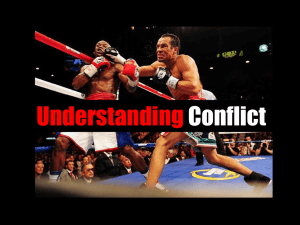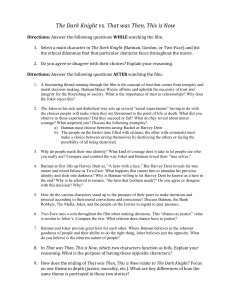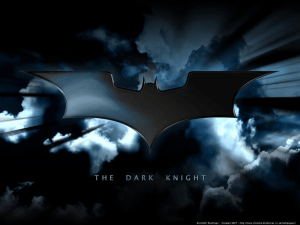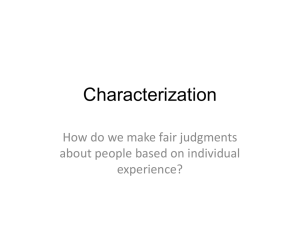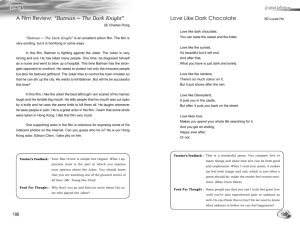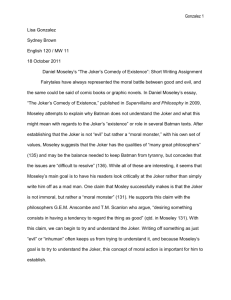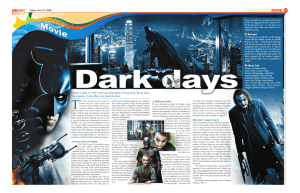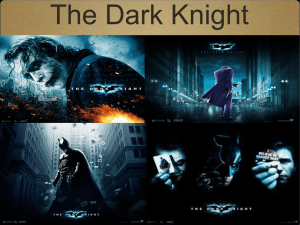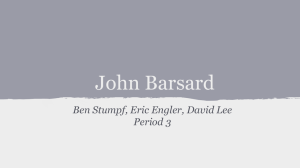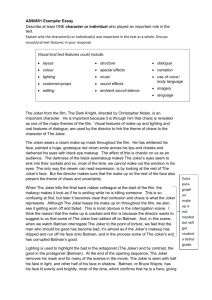The Dark Knight: Scene Analysis - Interrogation
advertisement
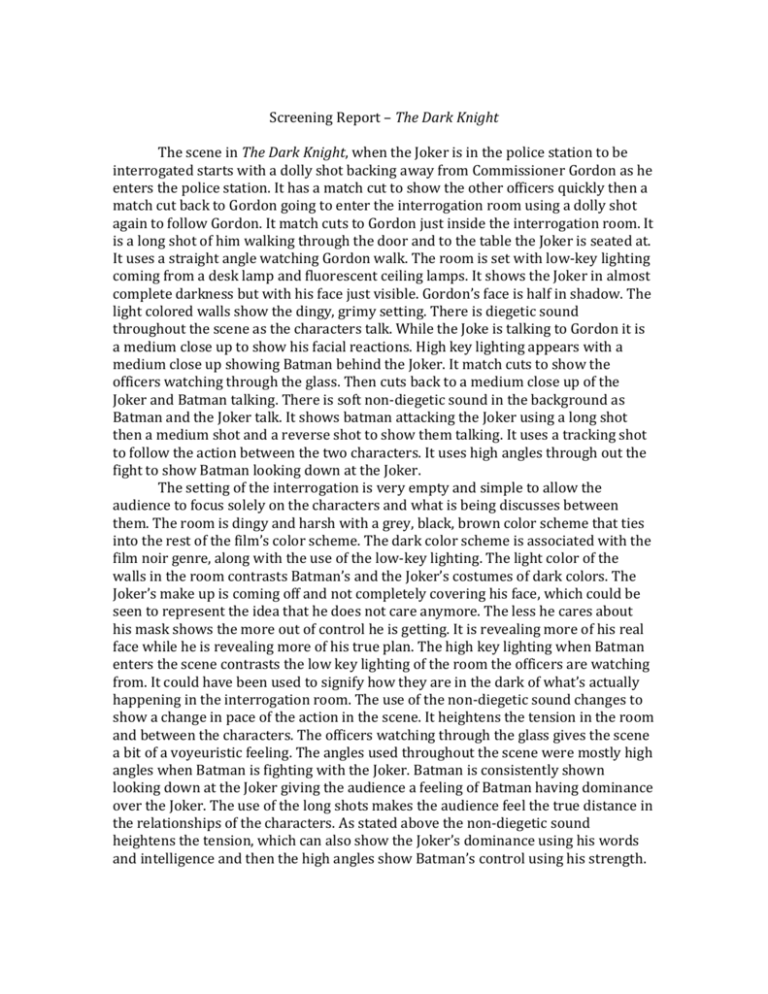
Screening Report – The Dark Knight The scene in The Dark Knight, when the Joker is in the police station to be interrogated starts with a dolly shot backing away from Commissioner Gordon as he enters the police station. It has a match cut to show the other officers quickly then a match cut back to Gordon going to enter the interrogation room using a dolly shot again to follow Gordon. It match cuts to Gordon just inside the interrogation room. It is a long shot of him walking through the door and to the table the Joker is seated at. It uses a straight angle watching Gordon walk. The room is set with low-key lighting coming from a desk lamp and fluorescent ceiling lamps. It shows the Joker in almost complete darkness but with his face just visible. Gordon’s face is half in shadow. The light colored walls show the dingy, grimy setting. There is diegetic sound throughout the scene as the characters talk. While the Joke is talking to Gordon it is a medium close up to show his facial reactions. High key lighting appears with a medium close up showing Batman behind the Joker. It match cuts to show the officers watching through the glass. Then cuts back to a medium close up of the Joker and Batman talking. There is soft non-diegetic sound in the background as Batman and the Joker talk. It shows batman attacking the Joker using a long shot then a medium shot and a reverse shot to show them talking. It uses a tracking shot to follow the action between the two characters. It uses high angles through out the fight to show Batman looking down at the Joker. The setting of the interrogation is very empty and simple to allow the audience to focus solely on the characters and what is being discusses between them. The room is dingy and harsh with a grey, black, brown color scheme that ties into the rest of the film’s color scheme. The dark color scheme is associated with the film noir genre, along with the use of the low-key lighting. The light color of the walls in the room contrasts Batman’s and the Joker’s costumes of dark colors. The Joker’s make up is coming off and not completely covering his face, which could be seen to represent the idea that he does not care anymore. The less he cares about his mask shows the more out of control he is getting. It is revealing more of his real face while he is revealing more of his true plan. The high key lighting when Batman enters the scene contrasts the low key lighting of the room the officers are watching from. It could have been used to signify how they are in the dark of what’s actually happening in the interrogation room. The use of the non-diegetic sound changes to show a change in pace of the action in the scene. It heightens the tension in the room and between the characters. The officers watching through the glass gives the scene a bit of a voyeuristic feeling. The angles used throughout the scene were mostly high angles when Batman is fighting with the Joker. Batman is consistently shown looking down at the Joker giving the audience a feeling of Batman having dominance over the Joker. The use of the long shots makes the audience feel the true distance in the relationships of the characters. As stated above the non-diegetic sound heightens the tension, which can also show the Joker’s dominance using his words and intelligence and then the high angles show Batman’s control using his strength.
